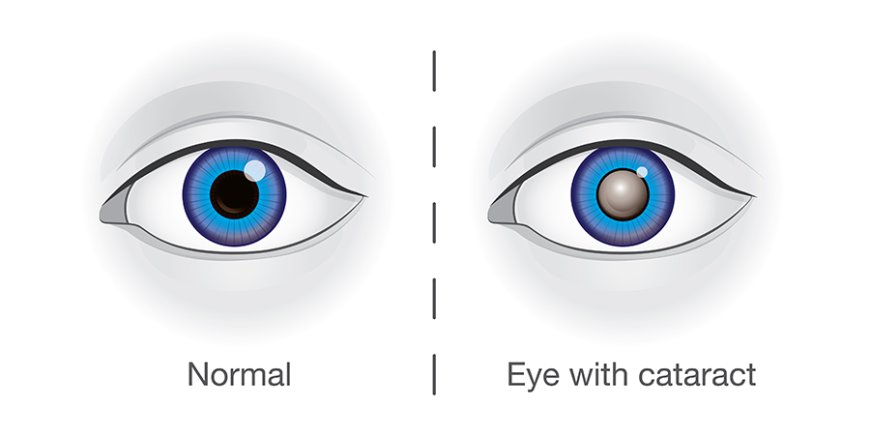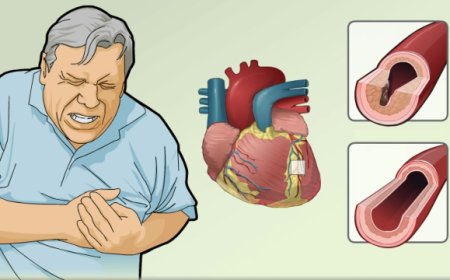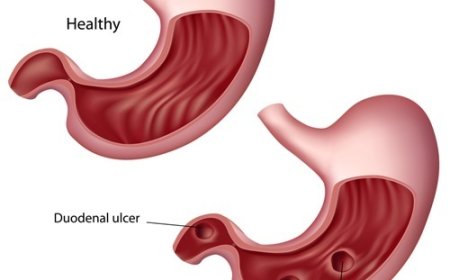Cataracts

Introduction :
In this article, we'll focus on cataracts, a common eye problem that affects people in India. We'll explore what cataracts are, their signs and symptoms, causes, risk factors, types, diagnostic tests, treatments, complications, and prevention techniques, all explained in a simple language for our 10-year-old readers.
Signs and Symptoms:
Cataracts are like a cloudy curtain over the eye, making it difficult to see clearly. Some common signs and symptoms include:
- Blurry or hazy vision, like looking through a foggy window.
- Sensitivity to bright lights, making it uncomfortable to be outside on sunny days.
- Difficulty seeing at night, especially when driving or walking in the dark.
What are Cataracts? :
Cataracts are a condition that affects the eye's lens, which is like a tiny window that helps us see clearly. When cataracts develop, it's like this window gets foggy, making things appear blurry.
How Are Cataracts Classified? :
Cataracts can be classified based on where they form in the eye or what causes them. This helps doctors understand how to treat them better.
Causes and Triggers:
The exact reasons why some people get cataracts are not always clear, but some things can increase the chances of developing them. For example:
- Growing older can be a common cause of cataracts, especially in older adults.
- Spending too much time in the sun without proper protection for the eyes can increase the risk.
Risk Factors with Examples:
Certain factors can make a person more likely to get cataracts. For example:
- People who smoke or are around others who smoke may have a higher risk of developing cataracts.
- People with certain medical conditions like diabetes may be at increased risk.
Types of Cataracts:
Cataracts can be classified based on where they form in the eye. Some common types are:
- Nuclear Cataracts: These form in the center of the eye's lens and are usually associated with aging.
- Cortical Cataracts: These develop in the outer edges of the lens, often looking like spokes of a wheel.
Diagnostic Tests and Their Use:
Doctors use different tests to diagnose cataracts and understand their type and severity. Some common tests are:
- Visual Acuity Test: This test uses an eye chart to measure how well a person can see at different distances.
- Slit-lamp Examination: The doctor uses a special microscope to examine the eye's lens and check for cataracts.
Treatments:
The treatment for cataracts depends on their severity and how much they affect a person's vision. Some common treatments are:
- Glasses or Contacts: In the early stages, using glasses or contacts can help improve vision.
- Cataract Surgery: If cataracts significantly impact vision, doctors can remove the cloudy lens and replace it with a clear artificial one.
Complications of Cataracts:
If left untreated, cataracts can lead to severe vision loss, affecting a person's ability to do daily activities and enjoy life.
Prevention Techniques:
While cataracts cannot always be prevented, some techniques can reduce the risk of developing them. For example:
- Wearing sunglasses with UV protection when going outside on sunny days.
- Eating a healthy diet with lots of fruits and vegetables to keep the eyes healthy.
Remember, just like we clean our glasses to see things better, doctors can help us see clearly by treating cataracts. If anyone experiences changes in vision or thinks they may have cataracts, it's essential to talk to a healthcare professional who can provide the best advice and treatment. With a clear vision, we can explore the beautiful world around us and continue to learn and grow!
What's Your Reaction?
 Like
0
Like
0
 Dislike
0
Dislike
0
 Love
0
Love
0
 Funny
0
Funny
0
 Angry
0
Angry
0
 Sad
0
Sad
0
 Wow
0
Wow
0







































































